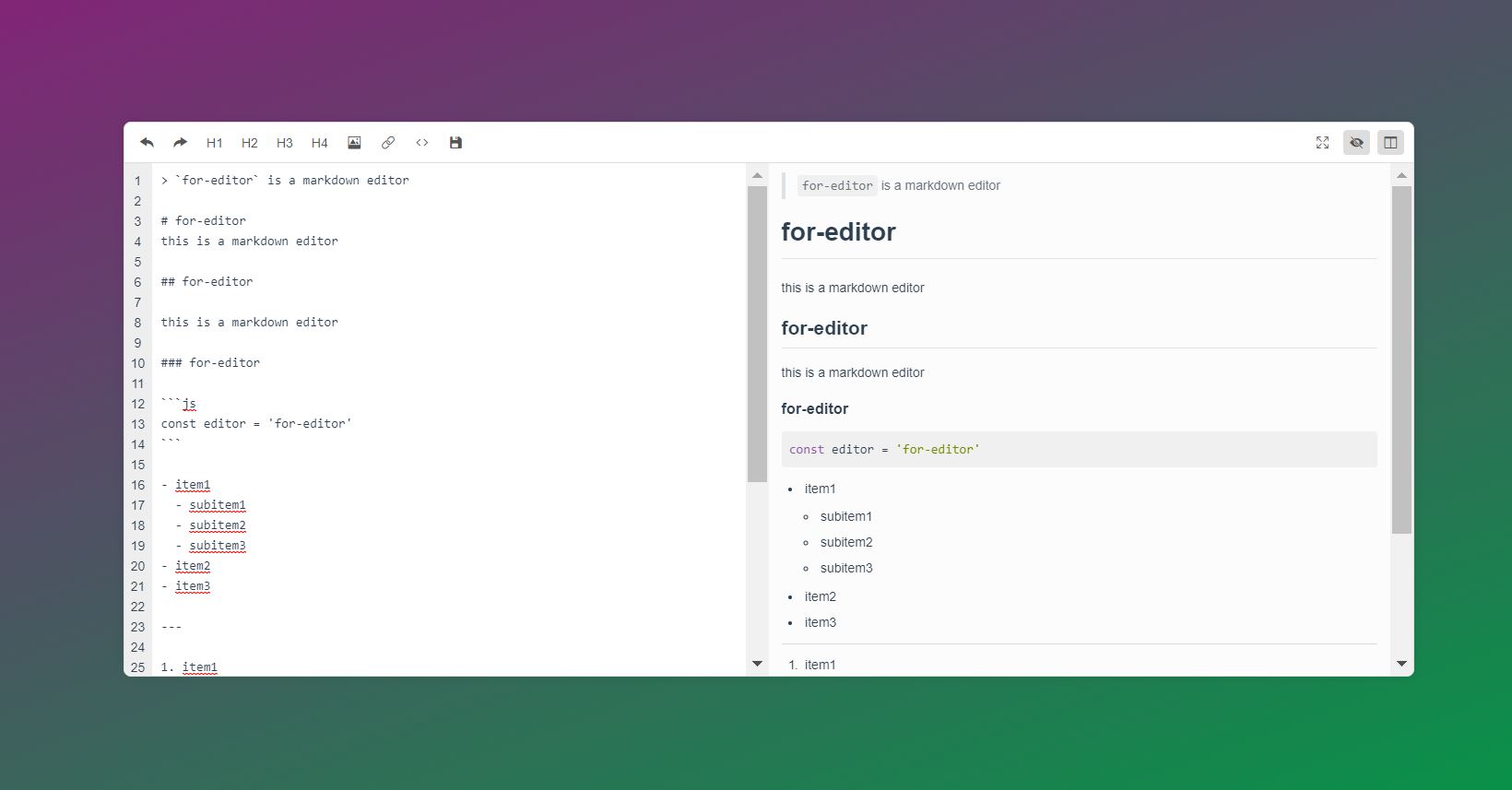Markdown component for React using remark.
Learn markdown here and check out the demo here.
Install
- React In Markdown (In React) Update, March 2019: This article is out of date. You can find my article on the new approach, using gatsby-mdx, here. This website is made with Gatsby.js, a static site generator for React. You can look at its source here. Gatsby packages up React components, Markdown files, and other assets, creating bundles of.
- React Markdown Table Generator. Creating Markdown Tables without having to be an ascii art professional. To Run yarn install yarn start Or, npm install npm start.
npm:
Jun 17, 2020 We will run the following command to create a simplest ReactJS named react-markdown-viewer. React-markdown-viewer is just my app’s name, and this will create a new folder and configuration based on the given name, so feel free to change the name to something else you prefer. Npx create-react-app react-markdown-viewer.
Why this one?
There are other ways for markdown in React out there so why use this one?The two main reasons are that they often rely on dangerouslySetInnerHTML orhave bugs with how they handle markdown.react-markdown uses a syntax tree to build the virtual dom which allows forupdating only the changing DOM instead of completely overwriting.react-markdown is 100% CommonMark (optionally GFM) compliant and hasextensions to support custom syntax.

Use
A basic hello world:
Show equivalent JSX
Here is an example using requires, passing the markdown as a string, and howto use a plugin (remark-gfm, which adds support for strikethrough,tables, tasklists and URLs directly):
Show equivalent JSX
API
props
children(string, default:')
Markdown to parseclassName(string?)
Wrap the markdown in adivwith this class nameallowDangerousHtml(boolean, default:false)
This project is safe by default and escapes HTML.UseallowDangerousHtml: trueto allow dangerous html instead.See securityskipHtml(boolean, default:false)
Ignore HTML in MarkdownsourcePos(boolean, default:false)
Pass a prop to all renderers with a serialized position(data-sourcepos='3:1-3:13')rawSourcePos(boolean, default:false)
Pass a prop to all renderers with their position(sourcePosition: {start: {line: 3, column: 1}, end:…})includeNodeIndex(boolean, default:false)
PassindexandparentChildCountin props to all renderersallowedTypes(Array.<string>, default: list of all types)
Node types to allow (can’t combine w/disallowedTypes).All types are available atReactMarkdown.typesdisallowedTypes(Array.<string>, default:[])
Node types to disallow (can’t combine w/allowedTypes)allowNode((node, index, parent) => boolean?, optional)
Function called to check if a node is allowed (when truthy) or not.allowedTypes/disallowedTypesis used first!unwrapDisallowed(boolean, default:false)
Extract (unwrap) the children of not allowed nodes.By default, whenstrongis not allowed, it and it’s content is dropped,but withunwrapDisallowedthe node itself is dropped but the content usedlinkTarget(stringor(url, text, title) => string, optional)
Target to use on links (such as_blankfor<a target='_blank'…)transformLinkUri((uri) => string, default:./uri-transformer.js, optional)
URL to use for links.The default allows onlyhttp,https,mailto, andtel, and isavailable atReactMarkdown.uriTransformer.Passnullto allow all URLs.See securitytransformImageUri((uri) => string, default:./uri-transformer.js, optional)
Same astransformLinkUribut for imagesrenderers(Object.<Component>, default:{})
Object mapping node types to React components.Merged with the default renderers (available atReactMarkdown.renderers).Which props are passed varies based on the nodeplugins(Array.<Plugin>, default:[])
List of remark plugins to use.See the next section for examples on how to pass options
Examples
Use a plugin
This example shows how to use a plugin.In this case, remark-gfm, which adds support forstrikethrough, tables, tasklists and URLs directly:
Show equivalent JSX
Use a plugin with options
American megatrends laptops & desktops driver download for windows 10. This example shows how to use a plugin and give it options.To do that, use an array with the plugin at the first place, and the optionssecond.remark-gfm has an option to allow only double tildes for strikethrough:
Show equivalent JSX
Use custom renderers (syntax highlight)
This example shows how you can overwrite the normal handling of a node bypassing a renderer.In this case, we apply syntax highlighting with the seriously super amazingreact-syntax-highlighter by@conorhastings:
Show equivalent JSX
Use a plugin and custom renderers (math)
This example shows how a syntax extension is used to support math in markdownthat adds new node types (remark-math), which are then handled byrenderers to use @matejmazur/react-katex:

Show equivalent JSX
Appendix A: HTML in markdown
react-markdown typically escapes HTML (or ignores it, with skipHtml),because it is dangerous and defeats the purpose of this library.
However, if you are in a trusted environment (you trust the markdown), you canreact-markdown/with-html:
Show equivalent JSX
If you want to specify options for the HTML parsing step, you can instead importthe extension directly:
Appendix B: Node types
The node types available by default are:
root— Whole documenttext— Text (foo)break— Hard break (<br>)paragraph— Paragraph (<p>)emphasis— Emphasis (<em>)strong— Strong (<strong>)thematicBreak— Horizontal rule (<hr>)blockquote— Block quote (<blockquote>)link— Link (<a>)image— Image (<img>)linkReference— Link through a reference (<a>)imageReference— Image through a reference (<img>)list— List (<ul>or<ol>)listItem— List item (<li>)definition— Definition for a reference (not rendered)heading— Heading (<h1>through<h6>)inlineCode— Inline code (<code>)code— Block of code (<pre><code>)html— HTML node (Best-effort rendering)virtualHtml— IfallowDangerousHtmlis not on andskipHtmlis off, anaive HTML parser is used to support basic HTMLparsedHtml— IfallowDangerousHtmlis on,skipHtmlis off, andhtml-parseris used, more advanced HTML is supported
With remark-gfm, the following are also available:
delete— Delete text (<del>)table— Table (<table>)tableHead— Table head (<thead>)tableBody— Table body (<tbody>)tableRow— Table row (<tr>)tableCell— Table cell (<td>or<th>)

Security
Use of react-markdown is secure by default.Overwriting transformLinkUri or transformImageUri to something insecure orturning allowDangerousHtml on, will open you up to XSS vectors.Furthermore, the plugins you use and renderers Bandrich modems driver download for windows 10. you write may be insecure.
Related
MDX— JSX in markdownremark-gfm— Plugin for GitHub flavored markdown support
React Markdown Blog
Contribute
See contributing.md in remarkjs/.github for waysto get started.See support.md for ways to get help.
This project has a code of conduct.By interacting with this repository, organization, or community you agree toabide by its terms.
License
React Markdown Loader
MIT © Espen Hovlandsdal
